One of the most memorable moments during my musical journey occurred when I was given the chance to perform on the Hammond B3 Organ for a Santana album. Picture this – seated at the B3 Organ in the heart of The Village Studios in Los Angeles, ready to jam with one of the most iconic guitarists of all time.
Prior to this incredible opportunity, I had only played a few Hammond organs, mostly electric ones, which were emulated by different Roland keyboards that were popular at that time.
What truly impressed me about the authentic Hammond B3 Organ was the rich, crunchy, and percussive sound produced by the Leslie speakers. The genuine sound of these organs left a lasting impression on me.
Now, whenever I come across an electric keyboard that aims to replicate these extraordinary instruments, I always strive to recreate the distinctive sound that has stayed with me since that unforgettable experience.
Top pick
Nord Electro 6D 73
It takes some time to get used to them before performing, but with the Nord, this is not an issue.
Editor’s choice
Yamaha YC88
Additionally, the keyboard offers an array of fantastic options such as vibrato, chorus, reverb, delay, and drive.
Best value
Hammond XK-1c
The timeless classics of the Rhodes, Wurli, and B3 Organ are undeniably indispensable.
Best Electric Organs Reviews
1. Nord Electro 6D 73 Stage Piano
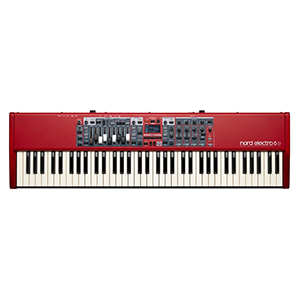
I have recently had the opportunity to use the Nord Electro 6D 73 in both studio settings and live performances with bands. It is truly remarkable how closely it emulates the sound of a real organ.
What truly sets this keyboard apart is the feel of the keys. In fact, they are even better than those of a genuine vintage organ. The weighted hammer keys are incredibly satisfying to play, and this model also functions as a piano.
Many vintage organs have keys that can feel stiff or oddly loose. It takes some time to get used to them before performing, but with the Nord, this is not an issue.
I particularly appreciate that this model focuses on the B3 organ and includes physical drawbars. These drawbars are essential in capturing the authentic feel of playing a B3. Additionally, the Nord does an exceptional job in reproducing the sounds of the Vox Continental and Farfisa transistor organs.
Although it does not have pedals, the Nord incorporates the bass pedal sounds of a real Hammond through the base of the Nord C2 organ engine. It does an excellent job in replicating the bass pedal sounds.
Another fantastic feature is the ability to split and layer three different sections across the keyboard, allowing for a wide range of sounds. For example, you can have the B3 at the top and bottom, and perhaps a Vox or Farfisa in the middle.
The Nord also includes programs and presets, allowing you to save your unique sounds, especially those you plan to use for performances. Additionally, it saves your drawbar settings, which is not something a real organ can do.
I appreciate that they have included a mount for the optional half-moon switch for rotary speaker control. This is crucial when playing a live organ. Furthermore, you can also use a pedal to trigger the Leslie action, which adds to the overall experience.
The only area where I see room for improvement is in the effects. While the sound of the organ itself is spot-on, I feel that the vintage vibrato lacks a bit of character.
2. Yamaha YC88 88-Key Keyboard
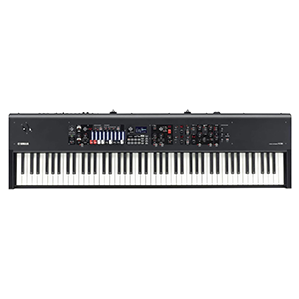
Yamaha consistently impresses with their exceptional vintage keyboard emulators. The YC88, their latest offering, is no exception to their track record of excellence.
Featuring stunning electric pianos, it is an essential addition for anyone seeking a comprehensive collection of 60s and 70s keyboards for their live performances.
The timeless classics of the Rhodes, Wurli, and B3 Organ are undeniably indispensable, whether you’re playing pop, rock, or jazz tunes.
Gone are the days of struggling with the cumbersome weight of these instruments when moving in and out of venues. Even the Wurli, notorious for its heaviness, is no longer a backbreaker.
One of the standout features of this keyboard is its dual rotary speaker models. The realism is truly striking, as organ players often position one Leslie speaker on each side to achieve that delightful stereo spread of the rotary sound.
Additionally, the keyboard offers an array of fantastic options such as vibrato, chorus, reverb, delay, and drive. Personally, I find myself constantly drawn to the warm tube quality of the drive effect, reminiscent of the transistor organs from days gone by. Yamaha has done an impeccable job with this effect.
I must also mention the enjoyable DX7 style FM sounds that Yamaha has incorporated. While it may deviate slightly from the realm of electric organs, the ability to split these keyboards opens up a world of unique possibilities. Imagine a DX7 style bell for the high notes and vintage organ vibes for the body.
However, playing an 88-key organ does come with a minor quirk. The range may feel slightly inauthentic since no organ actually has 88 keys. The extreme low and high notes can sound just a touch synthetic.
Unless you’re a discerning organ connoisseur, you may not even notice it, but there’s a certain intangible element that doesn’t quite feel right.
3. Hammond XK-1c Portable Organ
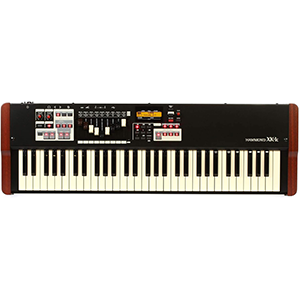
Hammond is renowned for their authentic electric organs, and the Hammond B3 is a true legend in the industry. However, if you’re looking for something equally impressive, the Hammond XK-1c is definitely worth considering.
One of the standout features of the XK-1c is its fantastic drawbars. They are meticulously labeled, allowing for precise control over the sound. The speed at which they pull and close is incredibly smooth, giving you a truly immersive experience.
But that’s not all – the XK-1c also offers some incredible pipe organ sounds. While they lean more towards transistor theater organs and church organs, they are capable of creating exciting and captivating effects.
When it comes to vibrato, Hammond keyboards truly excel. The vibrato on the XK-1c feels incredibly authentic, as if it has been directly taken from the vintage circuits of a Hammond B3. It’s truly remarkable to experience such a high level of quality in a digital keyboard.
The keyboard also boasts a superb EQ section, allowing you to enhance the sound to your liking. If you’re after the deep and powerful lows that the B3 is known for, the XK-1c delivers.
To maintain authenticity, Hammond has included an eight-pin Leslie speaker jack in the XK-1c. This means you can connect a real Leslie speaker, further enhancing the analog organ experience. It’s like running a digital Rhodes sound through a Rhodes suitcase speaker – the results are simply incredible. Additionally, if you prefer not to use vintage speakers, Hammond also offers some impressive rotary speakers.
The only minor drawback of the Hammond XK-1c is its reverb. While a real organ doesn’t typically require reverb due to the presence of Leslie speakers, if you do choose to add reverb, a vintage sound would be the perfect finishing touch. The reverb on this keyboard leans slightly towards a modern digital tone, which may not be to everyone’s preference.
4. Crumar Mojo 61 Organ
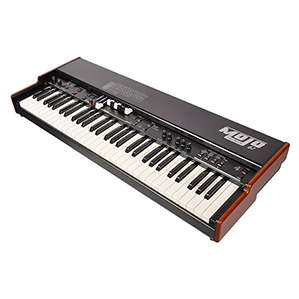
The Crumar string machines of the 60s and 70s were renowned for their coolness, rivaling even the Solina and ARP. It’s exciting to witness their resurgence in the form of a transistor organ-style keyboard.
The Mojo 61 possesses a certain charm, with its slightly minimalistic design, yet it unmistakably embodies the essence of an organ with its drawbars, vibrato, and chorus section perfectly positioned like those on the B3. The inclusion of a Leslie speaker representation on the keyboard, complete with slow and fast brakes, adds a seriously cool touch.
What truly sets this keyboard apart is its drive control. It features a dedicated knob that can produce wild tones, perfect for achieving those gritty Prog-Rock organ sounds.
Additionally, the inclusion of gritty electric pianos is noteworthy. They offer a delightful blend of Hohner Pianet and Wurli characteristics, with just the right amount of reed grittiness that is universally adored.
It is a bit disappointing that the keyboard only has 61 keys. Personally, I would have preferred a 73-key model to accommodate those extra high notes, a feature I greatly enjoy on the Nord.
A pleasant surprise is the built-in Wi-Fi capability. This allows you to adjust parameters using tablets or laptops, which is incredibly convenient for live performances or studio sessions when you need to recall settings. It’s an unexpected feature for an instrument with a vintage, retro vibe.
The Mojo 61 truly excels in studio recording sessions. It boasts excellent stereo balance and output punch, perhaps second only to the Nord in this regard.
The sound quality is remarkably clean, yet it possesses a three-dimensional quality reminiscent of a genuine analog keyboard. Perhaps they have managed to retain a hint of that synth magic from the beloved Crumar instruments of the past.
5. Hammond SKX Pro Organ
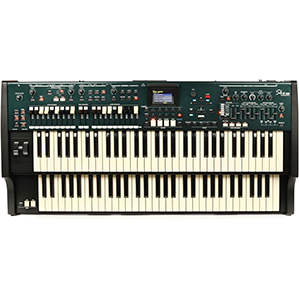
If you’re a fan of authenticity like me, you may have noticed that every B3 organ typically comes with a dual keyboard. It can be a bit disappointing when single keyboard B3 emulators fail to capture that same essence, don’t you think?
It almost feels like you’re playing a hybrid instrument, rather than the real deal.
But guess what? Hammond has heard our concerns and introduced the SKX Pro Dual electric organ. Not only is it visually impressive, but it also takes the best features of the XK-1c to the next level.
One of the most exciting aspects is that each keyboard level has its own set of drawbars. This makes it much easier to control your bass, high, and harmonic chord settings separately.
The goal of this organ is to provide a genuine B3 experience at your fingertips. It even has the rotary speed and Leslie break on the left side of the lower panel, just like the classic B3.
While it may appear to be a replica of a Hammond organ, it offers much more than that. Whether you see this as a bonus or a drawback is entirely up to you. If you’re someone who enjoys playing both organ and synthesizers, this keyboard could become your new best friend.
On the right side, there’s an envelope section specifically designed for creating authentic synthesizer sounds. It features knobs and sliders for controlling oscillator pitch, filter cutoff, and more.
Personally, I prefer to use this keyboard solely as an organ. I’m not completely convinced by its synth sounds compared to other brands. However, if you’re seeking an authentic organ experience, it will be difficult to find a better option.
Furthermore, playing the pipe and transistor organ models on the dual keyboard adds even more versatility to your performances. So, why not give it a try?
Final Word
I firmly hold the belief that these electric organs are an immense pleasure to play and they produce an exceptional organ sound. If you share my passion for organs, then it’s obvious that you yearn for that genuine Hammond experience.
Great news – we have not just one, but two Hammond organs available! However, I must confess that some of the other options on the list are equally impressive.
I highly recommend giving each of them a try. Get ready to have a fantastic time and remember to turn up the volume!

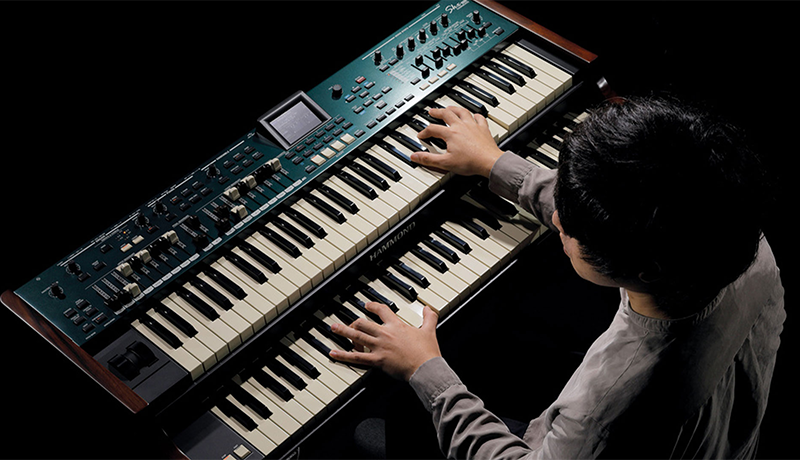



Leave a Reply